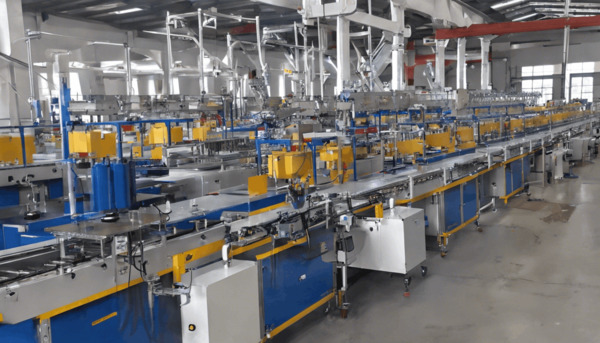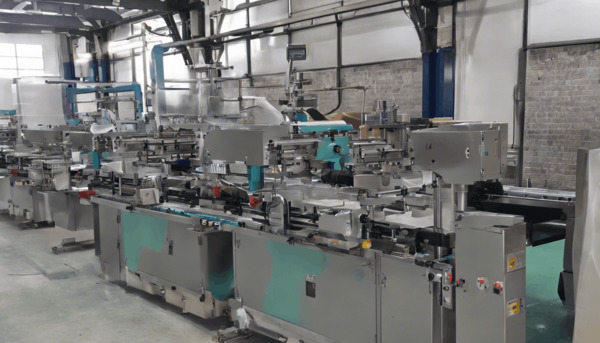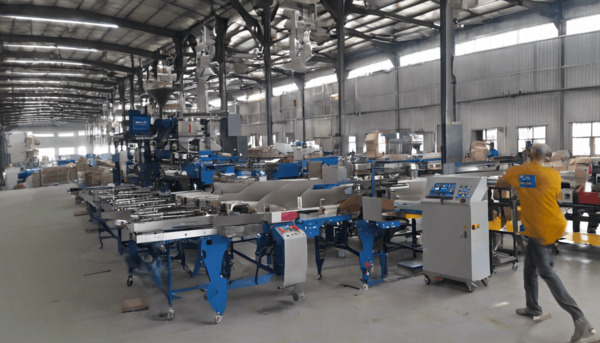
Understanding Packaging Materials for Chilli Powder
Packaging plays a crucial role in preserving the quality, flavor, and safety of food products, including chilli powder. Chilli powder, being a finely ground spice, requires specific packaging materials and technologies to maintain its freshness and prevent contamination during storage and transport. Proper packaging not only extends the shelf life of the product but also ensures it reaches consumers in optimal condition. This article delves into the various packaging materials used for chilli powder and highlights the role of automatic vacuum packing machines in this industry.
Key Requirements for Chilli Powder Packaging
When selecting packaging materials for chilli powder, it is essential to consider the following requirements:
- Barrier Properties: Chilli powder is highly sensitive to moisture, oxygen, and light. Exposure to these elements can cause the powder to lose its flavor, aroma, and color. Packaging materials must provide an effective barrier against these factors.
- Food Safety: The material should be non-toxic, food-grade, and compliant with regulatory standards to ensure consumer safety.
- Durability: The packaging must be robust enough to withstand handling during transportation and storage without tearing or breaking.
- Ease of Use: Consumers should find the packaging easy to open, reseal (if applicable), and dispose of responsibly.
- Brand Appeal: Packaging should be attractive and customizable for branding purposes, as it directly influences consumer purchasing decisions.
Common Packaging Materials for Chilli Powder
1. Plastic or Polythene Bags
Plastic or polythene bags are widely used for packaging chilli powder due to their versatility and affordability. These bags offer excellent resistance to moisture and are available in different thicknesses and designs (transparent or opaque). High-quality polythene bags are heat-sealable, lightweight, and resistant to oil and solvents, making them suitable for food-grade applications.
However, single-use plastic poses environmental concerns, prompting many companies to explore recyclable or biodegradable alternatives within this category.
2. Aluminum Foil Laminated Pouches
Aluminum foil laminated pouches are a premium choice for chilli powder packaging. These pouches provide excellent barrier properties against light, oxygen, and moisture, ensuring the product’s longevity and quality. The multi-layer structure (usually comprising aluminum foil, plastic layers, and sometimes paper) enhances durability while maintaining a lightweight profile.
Additionally, these pouches are ideal for vacuum sealing or nitrogen flushing processes, which further enhance the shelf life of chilli powder by removing oxygen from the packaging.
3. Paper-Based Packaging
Paper-based packaging materials, such as kraft paper pouches, are gaining popularity due to their eco-friendly nature. These pouches are often lined with plastic or foil layers to improve their barrier properties against moisture and air. Paper packaging is biodegradable and offers a rustic aesthetic appeal that resonates with environmentally conscious consumers.
However, pure paper packaging without additional barriers may not be suitable for long-term storage of chilli powder as it cannot provide adequate protection against moisture.
4. Vacuum Seal Bags
Vacuum seal bags are an excellent choice for preserving chilli powder over extended periods. These bags are made from durable plastic materials that can withstand vacuum sealing processes. By removing air from the package, vacuum sealing prevents oxidation, inhibits microbial growth, and preserves the spice’s natural color and flavor.
Vacuum seal bags are available in various thicknesses and can feature transparent or opaque designs depending on branding preferences.
5. Rigid Plastic Containers
Rigid plastic containers are commonly used for retail-sized packages of chilli powder. These containers come in various shapes and sizes and often include airtight lids to preserve freshness. They are reusable and provide excellent protection against physical damage during handling.
Rigid containers are particularly favored for premium or bulk packaging as they offer a high level of convenience and durability.
6. Glass Jars
Glass jars provide an airtight seal and an attractive presentation for chilli powder packaging. Glass is non-reactive and offers excellent protection against external factors like moisture and oxygen. Moreover, glass jars are recyclable and reusable, making them an environmentally friendly option.
However, glass is fragile compared to other materials and may not be suitable for large-scale distribution due to its weight and susceptibility to breakage.
7. Stand-Up Pouches with Zippers
Stand-up pouches with zipper closures have become increasingly popular in recent years for their practicality and aesthetic appeal. These pouches are made from multi-layer materials that provide excellent barrier properties while allowing the package to stand upright on shelves for better visibility.
The zipper feature enables consumers to reseal the package after use, maintaining the freshness of the chilli powder over multiple uses.
Role of Automatic Vacuum Packing Machines
Automatic vacuum packing machines play a significant role in the food packaging industry, especially for products like chilli powder that require extended shelf life and high-quality preservation methods. These machines automate the process of vacuum sealing, ensuring efficiency and consistency in packaging operations.
How Automatic Vacuum Packing Machines Work
The basic operation of an automatic vacuum packing machine involves removing air from the package before sealing it tightly to create a vacuum inside. Here’s a step-by-step breakdown of the process:
- The product (chilli powder) is placed inside a vacuum seal bag or pouch.
- The open end of the bag is positioned within the machine’s sealing chamber.
- The machine removes air from the bag using a vacuum pump, creating a vacuum environment inside the package.
- The machine seals the bag using heat-sealing technology to create an airtight closure.
- The sealed package is then ejected from the machine for labeling or further processing.
Advantages of Using Automatic Vacuum Packing Machines
Automatic vacuum packing machines offer numerous advantages for chilli powder packaging:
- Extended Shelf Life: Vacuum sealing removes oxygen from the package, significantly reducing oxidation and microbial growth that can spoil the product.
- Flavor Preservation: By eliminating exposure to air, vacuum sealing helps retain the rich aroma and flavor of chilli powder over time.
- Efficiency: Automation increases productivity by speeding up the packaging process and reducing labor costs.
- Consistency: Machines ensure uniform sealing quality across all packages, reducing wastage due to human error.
- Customizable Settings: Modern vacuum packing machines allow users to adjust settings like vacuum pressure, sealing temperature, and cycle time based on specific packaging requirements.
Conclusion
Selecting the right packaging material is essential for maintaining the quality, safety, and marketability of chilli powder. From simple polythene bags to advanced aluminum foil laminated pouches, each material serves unique purposes based on cost-effectiveness, environmental impact, and preservation capabilities.
Automatic vacuum packing machines have revolutionized food packaging by offering efficient and reliable solutions that enhance product longevity while maintaining flavor integrity. As consumer demand continues to evolve toward sustainability and convenience, innovations in packaging materials and technologies will play a vital role in shaping the future of the chilli powder industry.





